Empowering Creators
In today’s world, people are losing connection to the art and items they purchase and own. Meanwhile, artists and creators are struggling to convert their online presence directly into sales. This is how MakeWatch provides a video-led marketplace for patrons to discover brilliant makers, watch them create their work, and buy pieces from them directly.
By capitalizing on the short-video browsing trends of recent years, MakeWatch is striving to create a simple and intuitive video-led C2C marketplace for Makers and Buyers.
Creators can upload showcase videos that give an inside look at how handcrafted items are made, while buyers browse these videos and can easily purchase those items directly on the platform.
As the Product Lead for this project, I conducted end-to-end research, design, and testing to evaluate the viability of the client vision, iterating to a value proposition with real value innovation for the product.
Creators can upload showcase videos that give an inside look at how handcrafted items are made, while buyers browse these videos and can easily purchase those items directly on the platform.
As the Product Lead for this project, I conducted end-to-end research, design, and testing to evaluate the viability of the client vision, iterating to a value proposition with real value innovation for the product.
Goals
Conduct competitive analysis, user-centric research, and testing to hone in on a unique value proposition and product.
Deliver designs and prototypes that serve as a proof-of-concept for our client’s vision.
Responsibilities
End-to-end research, user interviews, competitive analysis, user flow development, content strategy, design, and testing
Conduct competitive analysis, user-centric research, and testing to hone in on a unique value proposition and product.
Deliver designs and prototypes that serve as a proof-of-concept for our client’s vision.
Responsibilities
End-to-end research, user interviews, competitive analysis, user flow development, content strategy, design, and testing
Timeline
8 Weeks - Ongoing
Team
Product Design Lead,
Executive Producer,
Full-Stack Developer
Disclaimer
Ongoing contract –
project documentation reflects work as of January 2018
8 Weeks - Ongoing
Team
Product Design Lead,
Executive Producer,
Full-Stack Developer
Disclaimer
Ongoing contract –
project documentation reflects work as of January 2018
Designs
Easy video browsing combined with an online marketplace
Opening MakeWatch puts you right into the action - immediately playing videos that showcase how creators make their beautiful products.
Users can swipe ahead to see another video, or tap into a product page and buy for themselves.

Intuitive creator profiles
MakeWatch is all about helping creators present the best version of their work. A straightforward profile page makes it simple for consumers to browse a creator’s listings.
From here, it’s easy to look at an item, see how it was made, like & comment on a video, or buy the product yourself.

Easy-to-use video & listing uploader
Listing a item for sale with a how-it’s-made video is clear & easy for anybody. An intuitive product listing flow prompts for video, accompanying pictures, captions, and other details.
A post preview ensures that a item listing will look the way you expect it to.
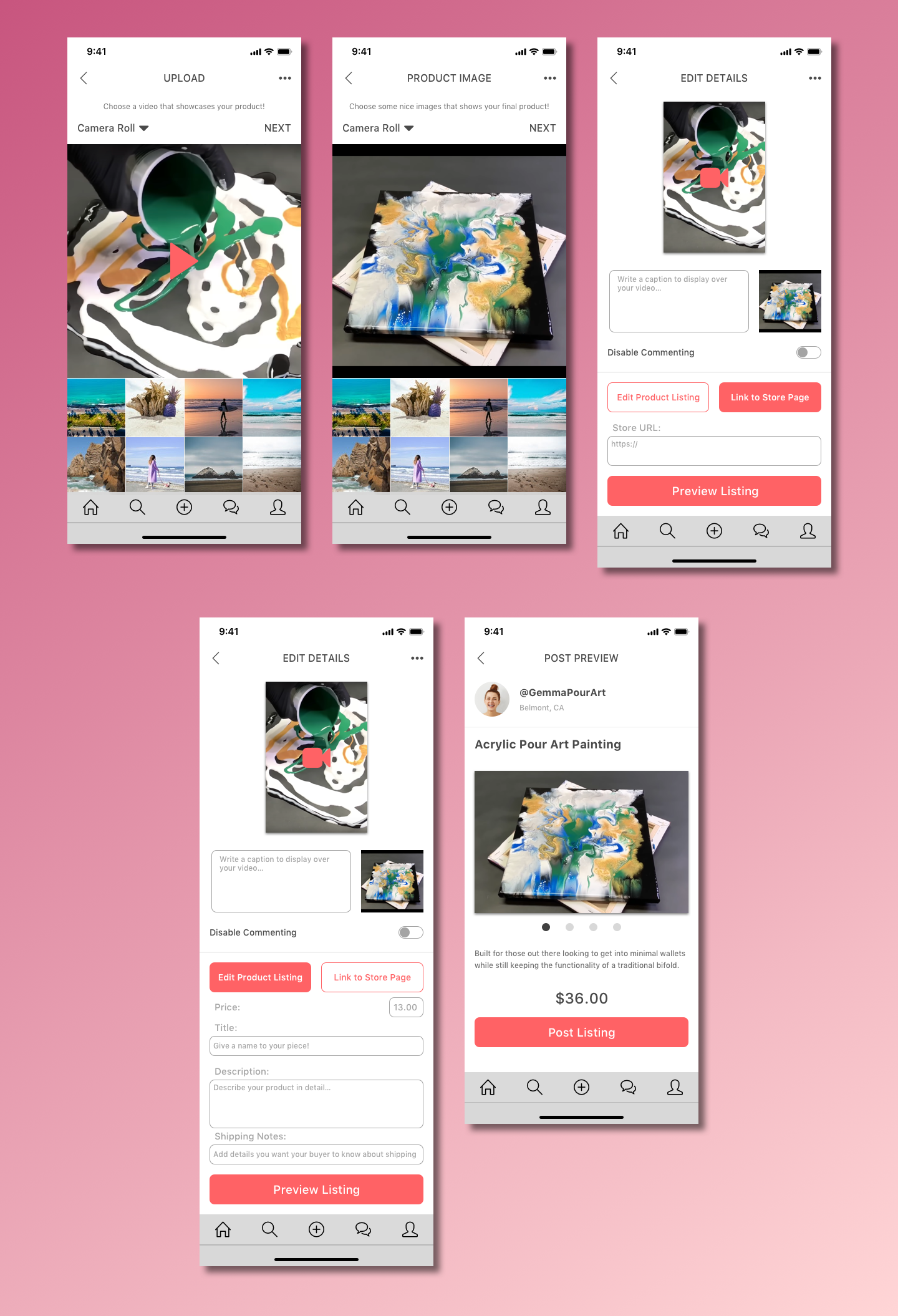
Straightforward sign up and login flows for both creators & consumers
An efficient sign up flow gets users running on the platform fast, and helps creators define their brand.

Initial Client Vision
A platform that helps artists and makers to showcase their creative process online through video-hosting & livestreaming, providing them with creative direction and opportunities to build branding.
Project Requirements
I was tasked with conducting comprehensive UX Strategy to repeatedly explore the market and research users on both sides, honing in on a value proposition that fit our vision.
Eventually, we pivoted to a product vision with untapped value innovation in the current market.
Eventually, we pivoted to a product vision with untapped value innovation in the current market.
- Develop Value Proposition
- Hypothesize Customer Segments
- Conduct User Interviews
- Conduct Competitive Research & Analysis
- Iterate on Value Proposition & Customer Pain Points
- Prototype
- Test
Value Proposition
A social broadcasting & video hosting platform where artists can record, edit, post content, and livestream for users to discover and interact with those artists.
We imagined livestreaming and video-making so easy, it would influence artists to start showcasing their process.
Research
Market Competitors
Identified and analyzed over 25 direct and indirect market competitors

Direct Competitors
I found a number of platforms and services that we considered as direct competitors to our value propositon.
Their key features included:
- Livestreaming
-
Short-video hosting
-
In-product video editing
- Social media features
Indirect Competitors
I also identified notable products that offered competing features & competition.
Key features:
-
Video animation assets
-
Promotional video making
- Content creation monetization

Competitive Analysis
I combined research findings from these competitors into an ongoing competitive analysis matrix to build a comprehensive snapshot of the market landscape.

User Interviews
With market research underway, we built a task plan and interviewed both consumers and creators to gain insights about the video-platform space.
I reached out to a number of creators on platforms like Instragram, TikTok, and Etsy - offering a small cash incentive for a 30 minute phone interview.
I reached out to a number of creators on platforms like Instragram, TikTok, and Etsy - offering a small cash incentive for a 30 minute phone interview.
“I’m scared to share videos of my creation process if the videos don’t look nice or seem unpolished”
22
Questions Asked11
Creators Interviewed6
Consumers Interviewed5
Content Categories Addressed10+
Major Pain Points Identified7
Interview HoursCompiled findings into a dynamic Trello board to organize responses and identify insights

Market Research Findings
• Successful social video platforms make it easy to immediately start watching content.
• Most video-sharing platforms don’t have tools to help novice video makers make content.
• There are many social video platforms to show and share work, promoting branding, and gaining exposure.
• However, none of these platforms directly provide a marketplace for selling work.
Interview Findings
• People don’t want to reveal secrets about their creative process, there’s not enough incentive.
• People use 3rd party apps to make video, THEN upload to social media.
• Creators don’t want to share unpolished content.
• Prospect of an easy-to-use video editor is not enough incentive to start using a new product.
• Branding is nice, but the common desire is to make money
Research Conclusions
There are already numerous video and social platforms for showcasing work, and our product idea does not provide any incentive for creators and viewers to use our product.
We realized that building a product that provides creative coaching to creators is labor intensive, expensive, and lacks scalability.
Changing Gears
A New Vision
After hours of deliberation looking through our research and interview feedback, I proposed to pivot our product to a new proposition with a concise vision:
A simple video-led marketplace and social platform, where creators & artists can showcase how-it’s-made videos of their products, selling directly to viewers browsing the app.
Value Innovation
Pursuit of differentiation and Low Cost, creating a leap in value for both buyers and the company
![]()

Creators upload short videos showcasing creations, and consumers browse these videos - able to buy the items directly from viewing.
![]()
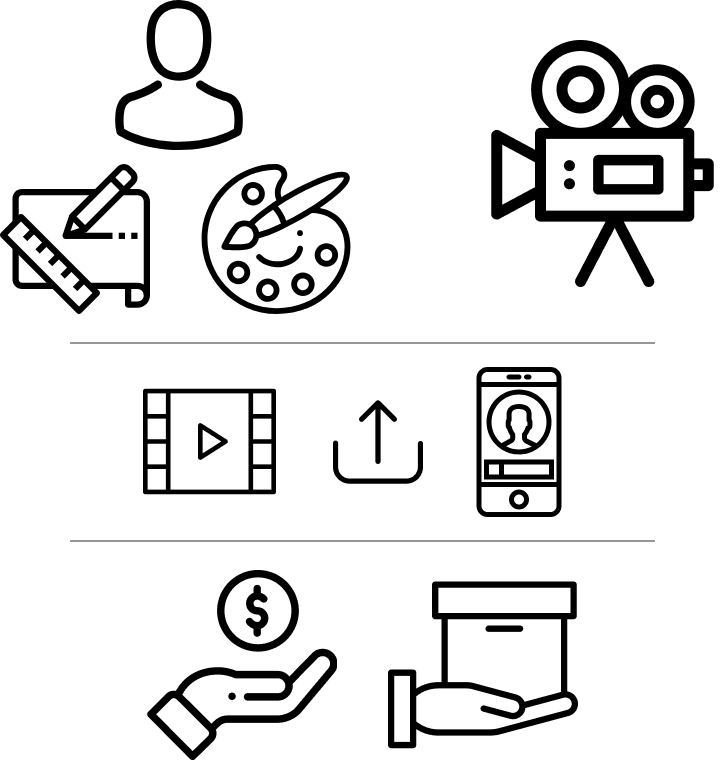
User Feedback
To validate our new proposition, we needed to prove a key hypothesis:
People are more likely to purchase products if they see the process of them being made.
This is a fairly easy assumption to make, with established companies like Apple publishing popular ‘how-it’s-made’ videos of their products, as well as small-scale sellers on platforms like Etsy showing their creation process on their store pages.
People are more likely to purchase products if they see the process of them being made.
This is a fairly easy assumption to make, with established companies like Apple publishing popular ‘how-it’s-made’ videos of their products, as well as small-scale sellers on platforms like Etsy showing their creation process on their store pages.
Tasks
- Build new interview task plan
-
Conduct fresh user interviews
-
Address new customer segment hypothesis & new pain point hypothesis
-
Validate our major assumptions
Example Interview Questions
“What do you think is missing from platforms where you promote your items for sale?”
“Have you ever had items for sale on multiple platforms at the same time?”
Have you thought about creating videos that showcase how you make your products? Why or why not?”
“Have you ever had items for sale on multiple platforms at the same time?”
Have you thought about creating videos that showcase how you make your products? Why or why not?”
“How does seeing an item being made affect your perception of that item?”
“Tell me about the last time you bought or ordered a ‘crafty’ or ‘artistic’ item.”
“When you’re choosing between similar items online, what helps you choose?”
“Tell me about the last time you bought or ordered a ‘crafty’ or ‘artistic’ item.”
“When you’re choosing between similar items online, what helps you choose?”
Satisfying Personas
The MakeWatch platform is built around two main user types, each with their own pain points, goals, and needs:
Creators:
Artists and makers that can upload videos to showcase their pieces, with embedded links to sell those pieces directly to users.
Artists and makers that can upload videos to showcase their pieces, with embedded links to sell those pieces directly to users.
Consumers:Everyday users that browse the platform, discover creators, watch creators make pieces, and easily buy those pieces.
Based on user feedback, I created personas for an aspiring artist and a typical consumer.


Prioritizing Features
To satisfy needs from our personas and research, we prioritized our features with a MoSCoW Method table to identify initial design needs for an MVP.
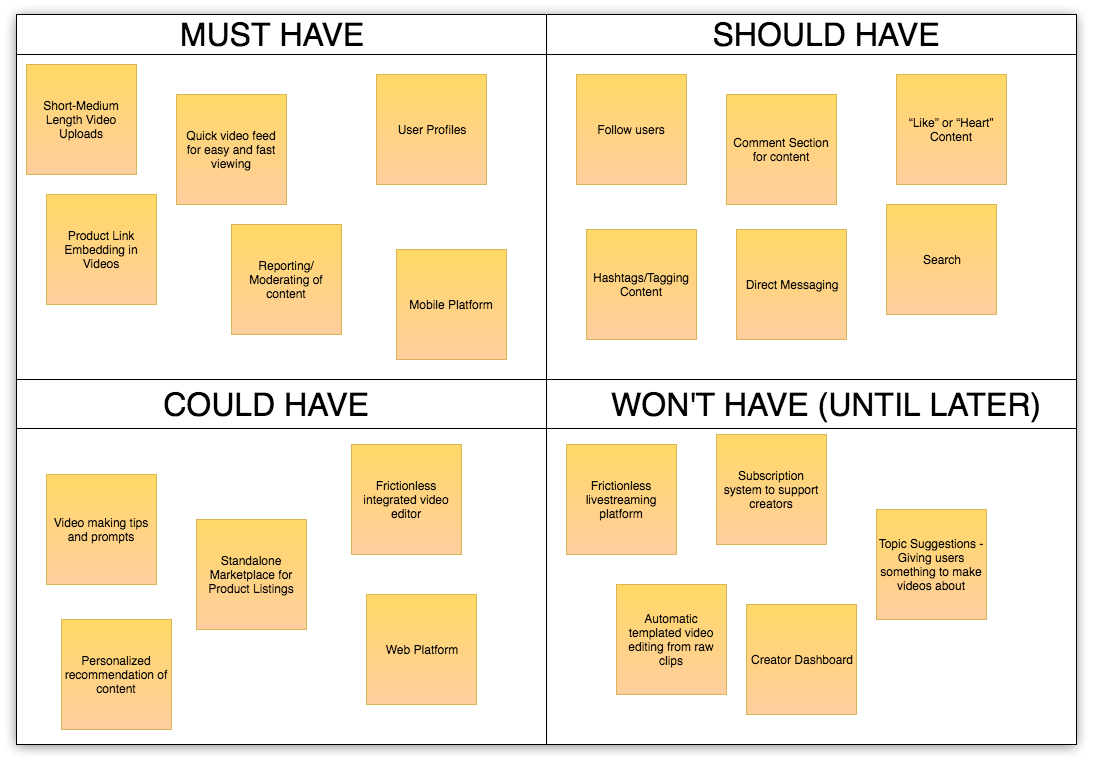
Focus Areas
Our Must-Have features set our initial focus areas for building and testing.
Immediate video feed for fast content viewing
Users on the home screen of the platform should be immediately viewing product videos.Short-medium length video uploads
Creators need a simple video upload wizard to post content with associated tags and info.Product links embedded in videos
Creators should be able to link to a store page directly from their videos, making it easy for viewers to buy products when they see an item they like.Social Platform
MakeWatch needs a basic social platform with creator profiles & user profiles, which enables commenting on content and direct messaging.Browse & Search
Creators and Consumers should be able to search the platform for videos, profiles, and content categories.Reporting and moderating content
As with any video hosting platform, users need to be able to report videos and accounts that violate MakeWatch’s Terms of Service.Build & Test
User Flows
With our user personas developed and a firm understanding of the new project requirements, I mapped out some initial workflows for our user types.
Paper Prototyping
Next came some basic paper wireframes on index cards. These included some essentials flows such as browsing video, browsing a creator’s listings, and posting a listing.








Initial Wireframing
With paper wireframes complete, I brought them into Sketch as low fidelity screens.








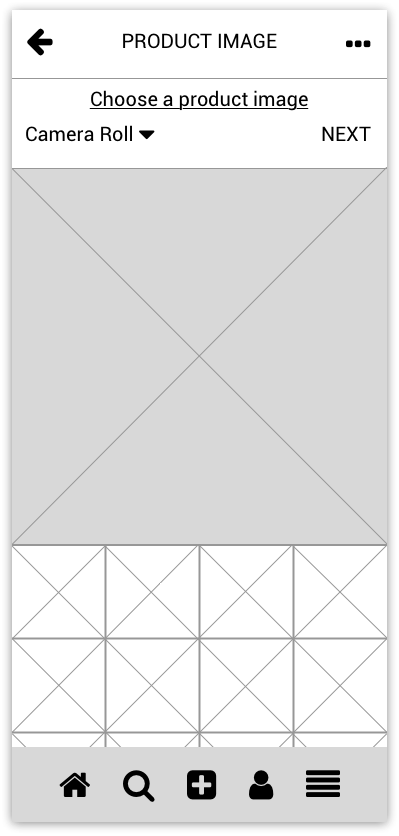

Usability Testing
With some basic wireframes complete, I linked the screens together and tested the prototype on 5 creators and consumers.
Some of the major feedback I gathered for needed changes:
Upload & posting previewsCreators want to see a preview of the product listing before they posted an item.
Select multiple product images Creators felt that one product image didn’t adequately showcase their item, and preferred the option to select multiple.
Disable commenting Creators expressed concern about undue negative commenting on their product videos.
Select multiple product images Creators felt that one product image didn’t adequately showcase their item, and preferred the option to select multiple.
Disable commenting Creators expressed concern about undue negative commenting on their product videos.
More clarity during the different steps of creating a product posting
Creators wanted better a better idea of where they were during the different stages of creating a listing.
Specifying shipping details when creating posts Creators wanted to make sure they could add details & notes about shipping restrictions.
Cost of item previews when viewing videos Viewers wanted to see the costs of products without navigating all the way to a product posting.
Specifying shipping details when creating posts Creators wanted to make sure they could add details & notes about shipping restrictions.
Cost of item previews when viewing videos Viewers wanted to see the costs of products without navigating all the way to a product posting.
Current Designs
I lifted our LoFi wireframes into High Fidelity wireframes, making sure to incorporate the feedback from testing sessions.
Opening the app launches users straight into watching creator videos, accompanied by a caption and product image.
Viewers can comment or like the content, tap in to see the creator, or swipe ahead to jump to the next video.
Item postings can be listed on the platform, or linked to an outside store page.
Viewers can comment or like the content, tap in to see the creator, or swipe ahead to jump to the next video.
Item postings can be listed on the platform, or linked to an outside store page.


A straightforward profile page makes it simple for consumers to browse a creator’s listings.
From here, it’s easy to look at an item, see how it was made, like & comment on a video, or buy the product yourself.
From here, it’s easy to look at an item, see how it was made, like & comment on a video, or buy the product yourself.
An intuitive product listing flow prompts for video, accompanying pictures, captions, and other details.
A post preview ensures that a item listing will look the way creators expect it to.
A post preview ensures that a item listing will look the way creators expect it to.

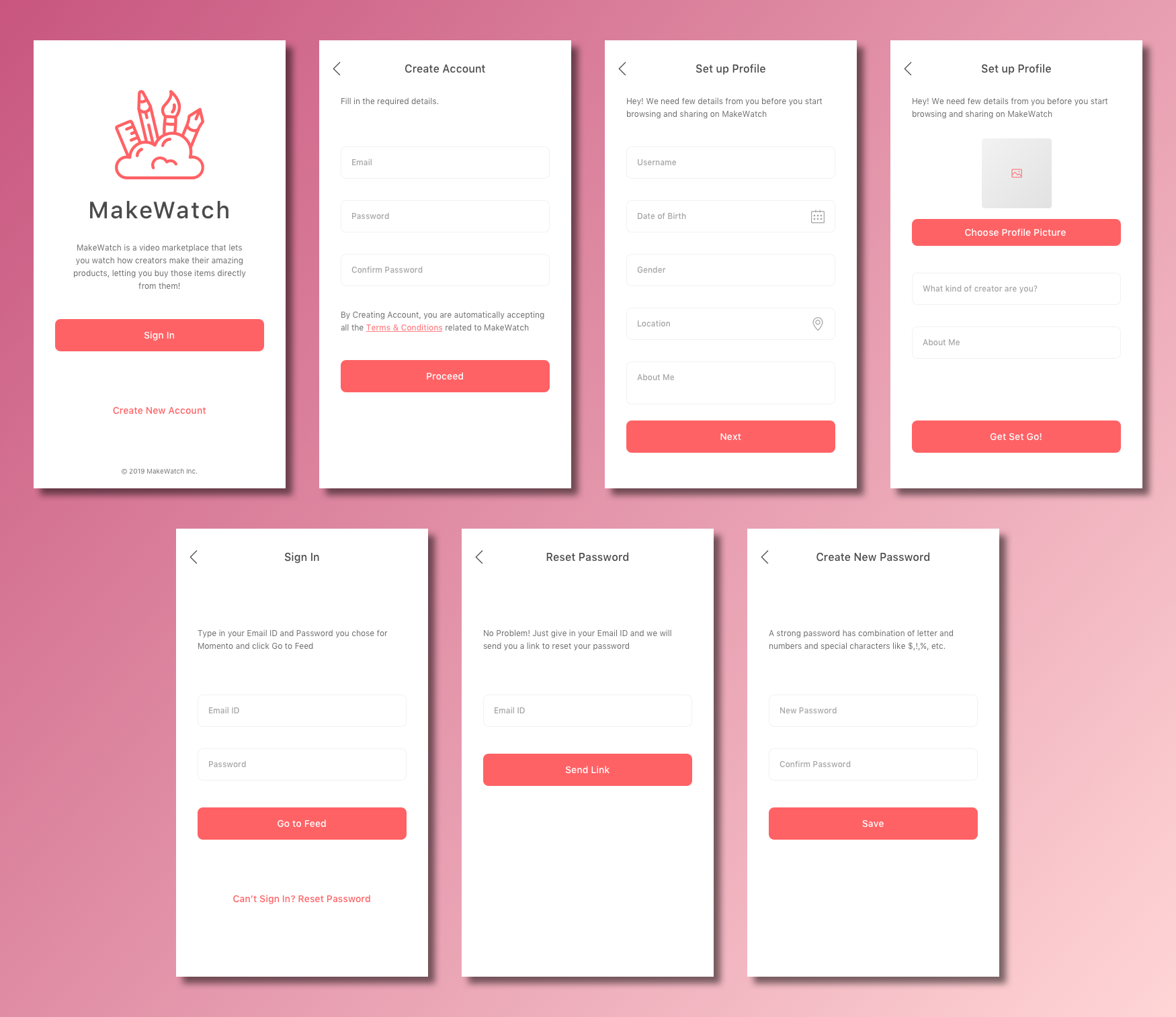
An efficient sign up flow gets users running on the platform fast.
Clear UX copy promotes clarity during the onboarding process.
Clear UX copy promotes clarity during the onboarding process.